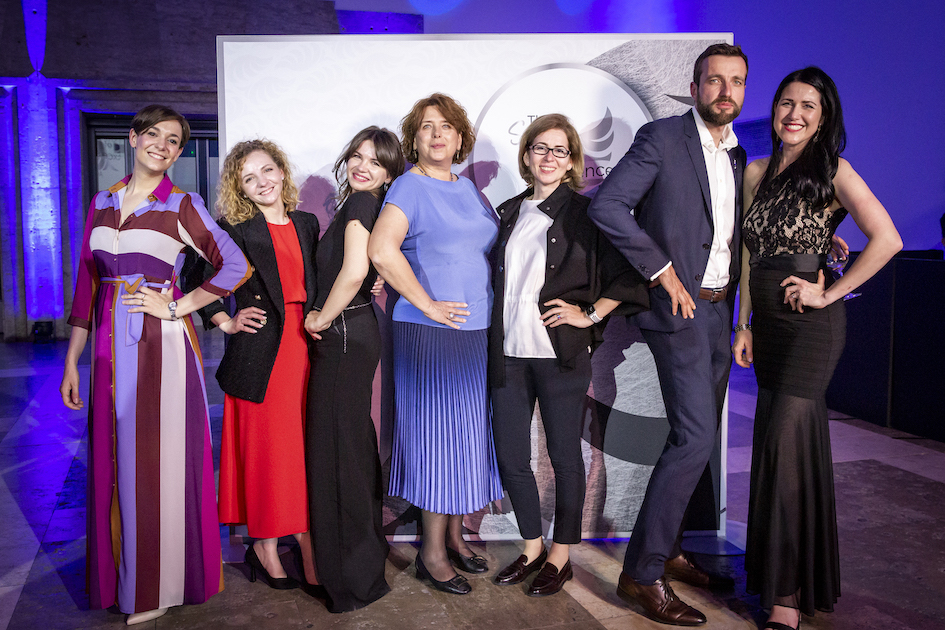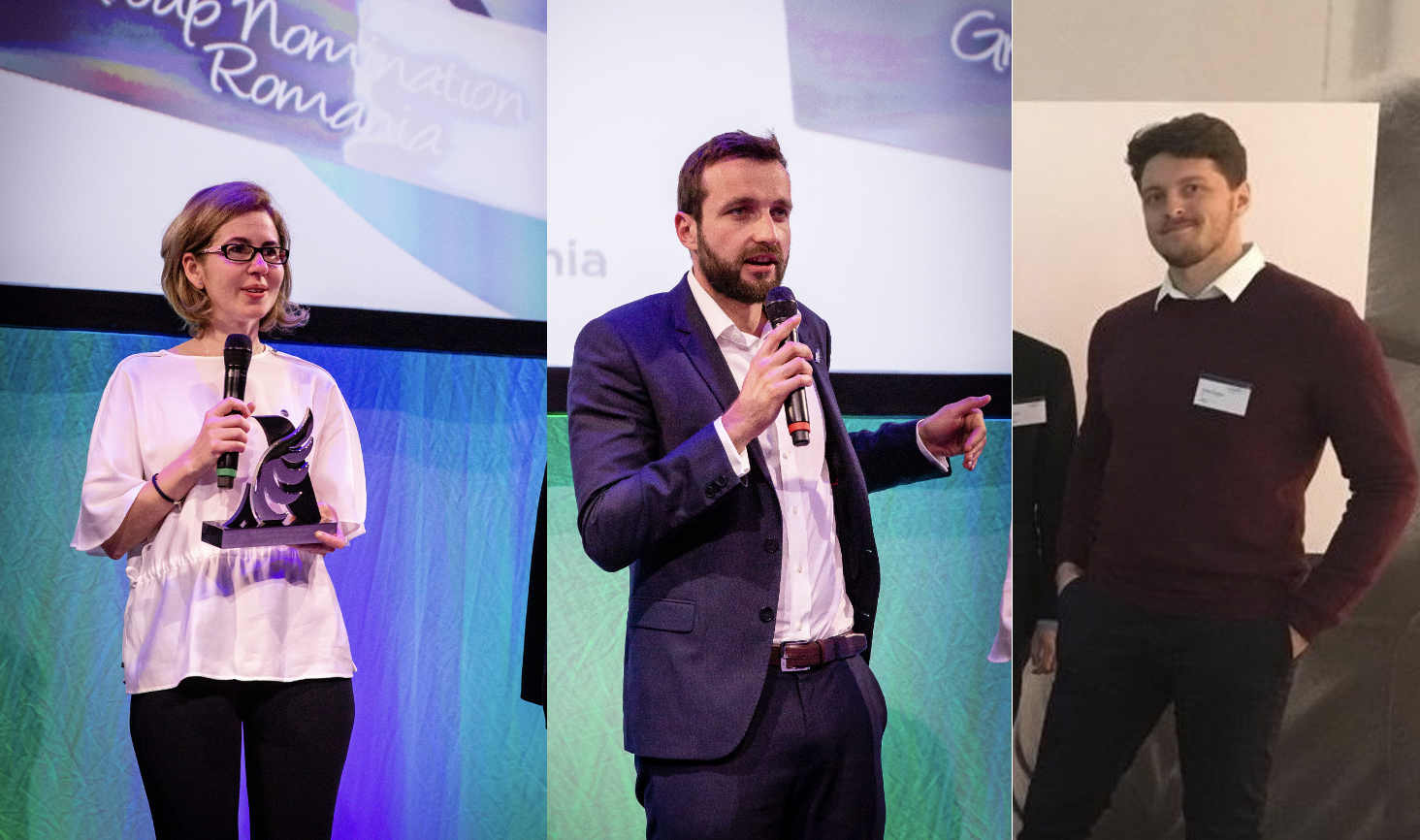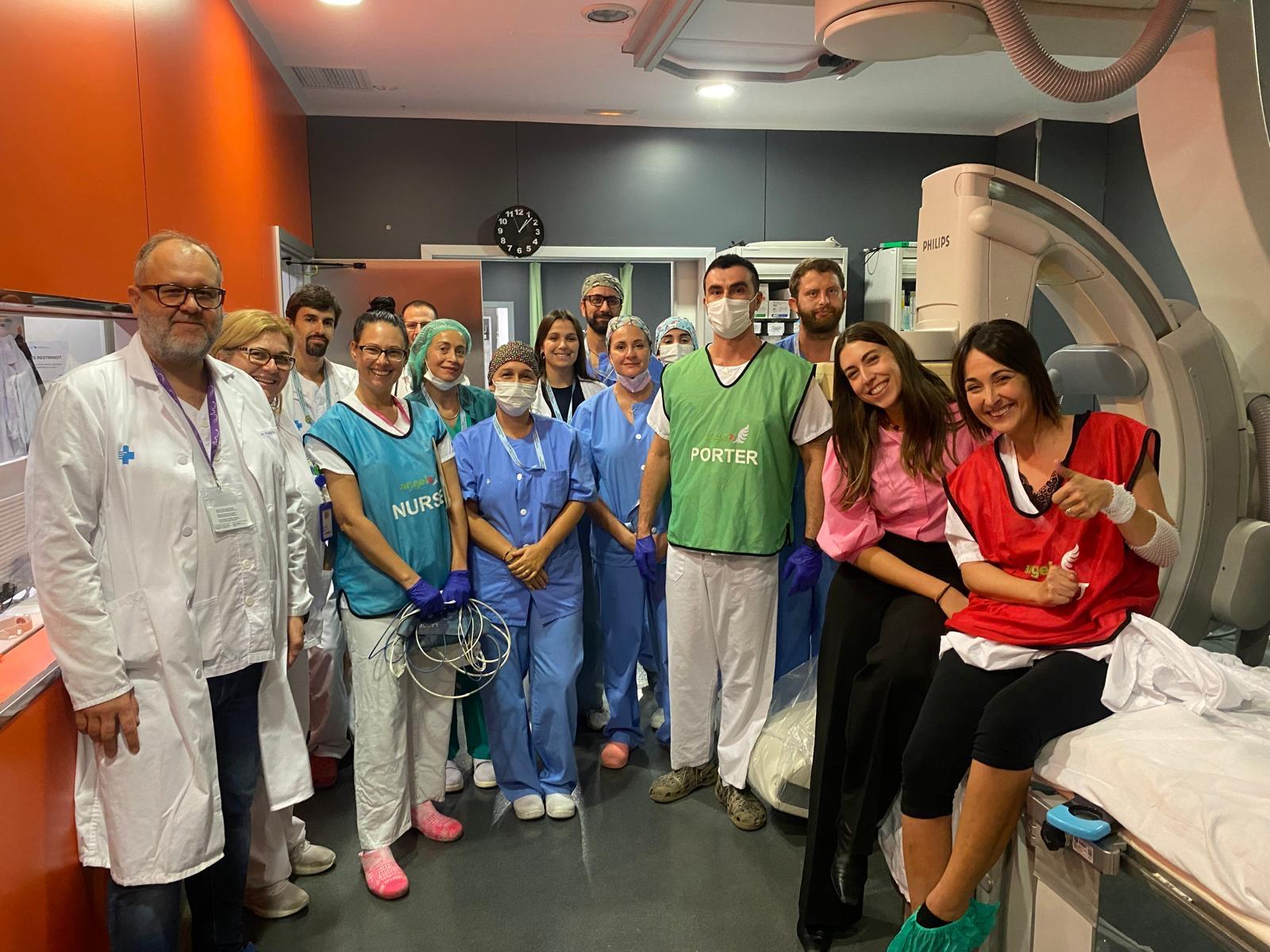
Jaká je motivace a poslání?
Dr. Elena Terecoas
Do tohoto projektu jsme se zapojili s pevným přesvědčením, že léčba pacientů s cévní mozkovou příhodou v Rumunsku může být výrazně zlepšena, stejně jako se to stalo v jiných evropských zemích. Zpočátku jsme chtěli mít co nejvíce nemocnic v zemi, které by mohly nabídnout intravenózní trombolytickou léčbu pacientům s akutní cévní mozkovou příhodou. Později jsme chtěli, aby tyto nemocnice léčily co nejvíce pacientů. Nyní usilujeme o lepší standardy kvality a zlepšení péče o cévní mozkovou příhodu před hospitalizací.
Dr. Vlad Tiu
Aby bylo jasné, tým snů neznamená, že jsme nějak lepší než ostatní, ale spíše to, že se někdy na cestě setkáváte s několika velmi výjimečnými lidmi a jen kliknete. Kéž by si každý mohl zažít ten hluboký pocit štěstí a vyšší produktivitu, kterou získáte díky tomu, že jste v týmu, který se zdá jako sen. Vždycky jsem věřila, že jsme všichni odpovědní za to, že se naše okolí stane trochu lepším. Děláme jen tu nejlepší práci, jakou dokážeme.
Dr. R |zvan Radu
Cíl je jednoduchý, i když je obtížné jej dosáhnout – vybudovat integrovanou a efektivní síť zdvihů. Poslání je ambicióznější – dosáhnout míry léčby stanovené v hlavním plánu cévní mozkové příhody, který je ve velké, řídce osídlené zemi s příliš malým počtem lékařů ještě obtížnější. Řídíme se naší jistotou, že se nám daří lépe, navzdory problémům v našem systému zdravotní péče. Věříme, že zdravotničtí pracovníci by měli utvářet systém zdravotní péče, ne naopak.
Kdybyste mohli změnit jednu věc...
Dr. Elena Terecoas
Rád bych v každé nemocnici viděl tým neurologů zapojených do léčby pacientů s cévní mozkovou příhodou. To by přineslo změnu pro
k lepšímu místně – jak z hlediska aktivity na neurologickém, radiologickém a pohotovostním oddělení, tak při vzdělávání populace o rychlém rozpoznání příznaků cévní mozkové příhody.
Dr. Vlad Tiu
Mám potíže s výběrem mezi lepší postakutní péčí nebo zlepšením přístupu k mechanické trombektomii v hyperakutní fázi. Určitě potřebujeme mnohem víc obojího. Ale nejnaléhavější potřebou, s největším dopadem, by byl výrazně větší přístup k neurointervenčním zákrokům.
Dr. R |zvan Radu
Rád bych viděl nejmodernější přenosový systém pro případy okluze velkých cév (LVO) mezi stávajícími a budoucími léčebnými centry a komplexními centry. Ideálně by to zkombinovalo doporučení na úrovni přednemocnice se softwarem, který může sebevědomě definovat LVO na nativním CT a okamžitě aktivovat přenosový protokol.
Co mělo největší dopad?
Dr. Elena Terecoas
Ke zlepšení léčby pacientů s cévní mozkovou příhodou v Rumunsku rozhodně přispěly tři faktory: implementace národního protokolu léčby cévní mozkové příhody, regionálních workshopů a rozvoje Národní léčebné sítě pacientů s cévní mozkovou příhodou, která zahrnuje nejen infrastrukturu, ale také komunitu lékařů, kteří spolupracují s důvěrou, snadností a účinností.
Dr. Vlad Tiu
Specializované workshopy na pracovišti. Každý z nás čelí různým překážkám ve zlepšování péče o cévní mozkovou příhodu, takže tam musíte být a vidět, jak to jde. Začlenění simulací do těchto workshopů má také tendenci poskytovat nejlepší a nejrychlejší výsledky.
Dr. R |zvan Radu
Znalost zaměstnanců nemocnice vás staví do pozice, kdy je můžete inspirovat – a dát jim pocit, že nejsou sami, ale jsou součástí národního týmu, který spolupracuje na dosažení stejných cílů.

Co vyniká?
Dr. Elena Terecoas
V roce 2017 jsem vzal mapu Rumunska a vybarvili jsme oblasti, kde by pacienti s akutní cévní mozkovou příhodou mohli být léčeni intravenózní trombolýzou v oranžové barvě a oblasti, kde by nemohli být léčeni šedě. Výsledkem byla mapa s šedým pozadím, na kterém byly oranžové skvrny. V roce 2019 jsem vytvořil novou mapu, která měla oranžové pozadí a jen několik šedých míst. To byl jeden z nejšťastnějších okamžiků mé lékařské kariéry.
Dr. Vlad Tiu
Ocenění Angels Awards udělalo mnoho pro změnu našeho myšlení. Monitorování péče o cévní mozkovou příhodu, analýza dat registru, samostatné hlášení (upřímně), stanovení cílů. Selhání a návrat do příštího roku, odhodlanější, lépe připravená. Zpětná vazba byla normalizována a ukázala nám, kde na světě jsme. Nemocnice v Rumunsku nyní pravidelně získávají ceny za diamanty, platinu a zlato. To je něco, co se mi hodně líbí.
Dr. R |zvan Radu
Pro mě to byl jeden z prvních workshopů Angels v roce 2017. Bylo tam velké vzrušení a poté lékaři začali trombolyzovat své první pacienty po celé zemi. Také mi velmi zvláštní osoba z týmu Angels řekla „nevzdát se Rumunska“. Takže jsem tady. Doufejme, že měl pravdu!
Co u vás zůstává?
Dr. Elena Terecoas
Mé oblíbené akce byly prvními regionálními workshopy v Bra |ovu a Sibiu. O těchto událostech však nemůžeme mluvit, ke kterým došlo, když byla míra trombolýzy v Rumunsku 1 %, aniž bychom mluvili o Ligii B |l ̋nean, první andělské poradkyni v Rumunsku. Měla fantastické odhodlání a vynaložila obrovské úsilí, aby byla správná léčba dostupná pacientům s cévní mozkovou příhodou v Rumunsku. Pátým členem týmu Dream Team bude vždy Ligia B |l |nean.
Dr. Vlad Tiu
Bylo tu mlhavé zimní ráno a s Räzvanem jsme byli posláni do Constána na workshop IVT a simulaci na místě. Oba jsme byli v té době obyvatelé a pamatuji si, jak vypadá znepokojení a zklamání, když jsme vstoupili do místnosti plné lékařů, kteří čekali na „odborníky“. Nějak jsme je přiměli hrát si spolu s námi a když jsme odešli, cítil jsem, že se něco změnilo. O dva týdny později jsme slyšeli, že v Constanu právě proběhla první trombolýza. Dělají to od té doby.
Dr. R |zvan Radu
Prováděl jsem simulaci s Vladem v Constánu. Vlad hrál na rodinného příslušníka jako skutečný herec a vytvářel spoustu zjevných problémů pro zúčastněné lékaře. V té době nebyla v Constanu provedena trombolýza. Když úspěšně zahájili tPA, měli jste 30 lidí, kteří se na vás dívali a mysleli si: „To je všechno? Je to tak snadné?“. V prvním roce Constanhovi se podařilo dosáhnout 7% sazby tPA a já osobně ji považuji za úžasnou. Děkuji Andělům za to, že jste nám tuto příležitost dali.


